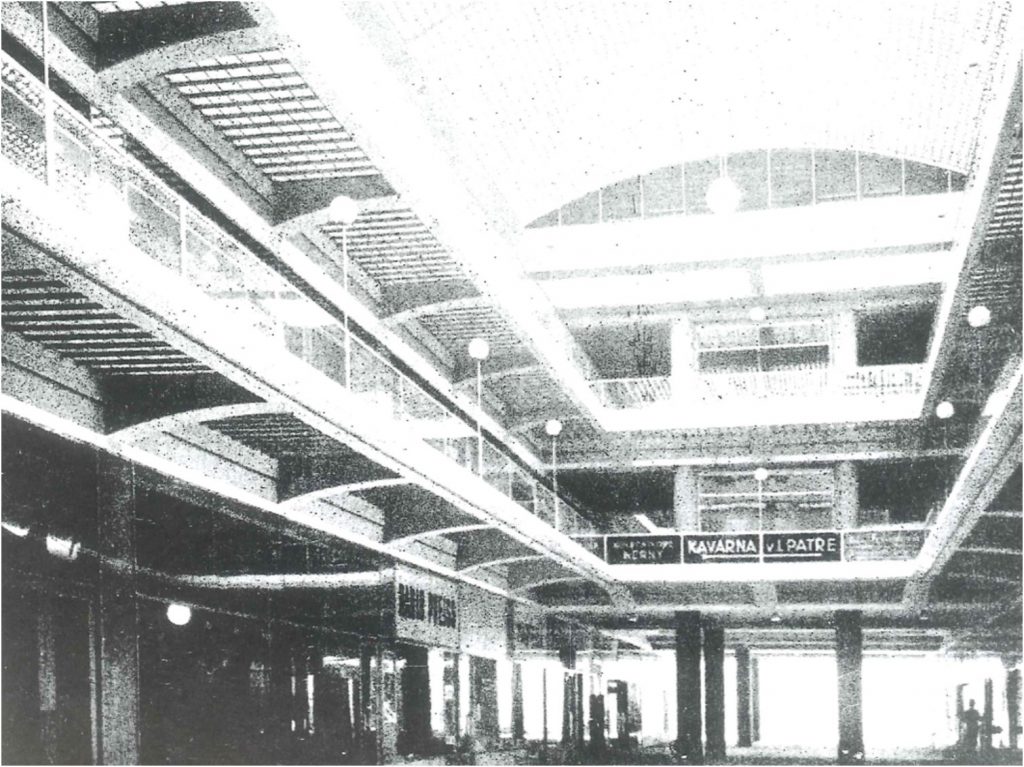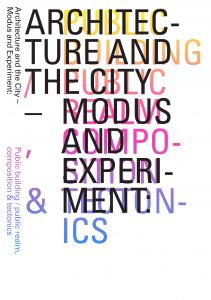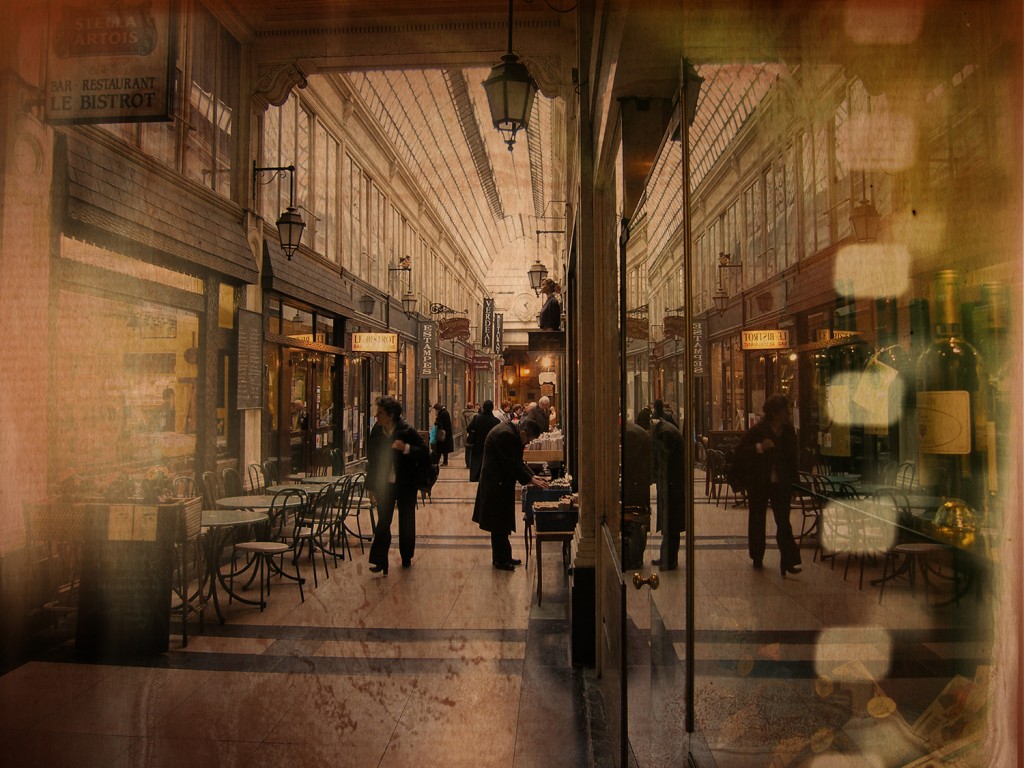How do we make public space that is inviting for all? What is public space in open cities? What can we learn from public space abroad? Three interesting lectures to inspire and to take lessons from. Sharing visions on public space at the HUA in Amersfoort.
Continue reading
Tag Archives: public sphere
Pasáži Renesance
Prague has more arcades than Paris. Still, they are less known. This is unfortunate, because these arcades underlining the identity of Prague and the Czech Republic. This is underpinned particularly during the 1990s arcade renaissance. New arcades have been designed, like Pasáž Jiřího Grossmanna (1995 –1996), Rathova Pasáž (1996), and the redesign Hrzanska Pasáž of 1702-1704 (1996). These projects have upgraded existing arcade systems, introduced new styles, but foremost new hopes… It echoed an update on the Czech Awareness.
Throughout history we have seen this happen in the design of arcades in Prague. This particular study brings us back to the rise of Bohemian identity and unfolds an epistle illuminating an alternative arcade project. As such, the study reframes relations between design of public space and society and provides a way to understand shifts in these.

Pasáže Černé Růže (1936), by Oldřicha Tyla
Pražské Pasáže
Arcade Projects in Prague
Public Buildings | Urban Architectural Design | Contextual Assignment
as projects for people, and projects within Society
Architecture and the City
The Architecture and the City: Public Realm/Public Building research group of the Faculty of Architecture and the Built Environment, Delft University of Technology focuses on questions regarding the mutual relationship between the city and its public realm. This is a relationship that can only be considered in socio-cultural and economic context. The idea of the public realm here refers to an intermediate ‘space’, which facilitates and mediates between different groups of inhabitants and individuals; the idea of the public realm as the space of (ex)change of ideas, opinions and beliefs of the different groups of users. Therefore, the architecture of the city and its actual qualities form the main framework of this research. Within this context urban blocks, as interface between architecture and urban design, and public buildings are seen as crucial architectural elements. Their functioning and organisation are physically, symbolically, socially and economically fundamental to the city. As such they form a domain both of architectural convention and experimentation. In terms of research and design methods architectural typology, typo-morphology and research-by-design hold a central position in our group’s approach.
Public Space: Changing Values
The Quest for Public Space: Changing Values in Urban Design, The City as Learning Lab and Living Lab
This article highlights the dynamics of values in our reasoning on public space. By means of an epistemological study, it tests the contemporary premises underlying our ways to safeguard the inclusive, democratic, agential city, and, as such, it aims to update our view on urban design. The article raises three subsequent questions: [i] Is the city our common house as perceived from the Renaissance onward, containing all, and consequently are public spaces used by the people as a whole? [ii] Is the city formalising our municipal autonomy as emphasised since the Enlightenment, in an anti-egoistic manner, and in this line, are public spaces owned by local governments representing the people? And, [iii] is the city open to our general view as advocated in Modern reasoning, restricting entrepreneurial influences, and synchronically, is its public spaces seen and/or known by everyone? – Inclusiveness, democracy, agentiality are strongholds in our scientific thinking on public space and each issue echoes through in the practice on urban design. Yet, in an aim to keep cities connected and accessible, fair and vital, and open and social, conflicts appear. Primarily based upon reviewing urban theory and particularly experiencing the Amsterdam for this matter, the answering of questions generates remarks on this aim. Contemporary Western illuminations on pro-active citizens, participatory societies, and effects of social media and micro-blogging forecast a more differentiated image of public space and surmise to enforce diversification in our value framework in urban design.
See:
Harteveld, Maurice G. A. D. (2017) The Quest for Public Space: Changing Values in Urban Design, The City as Learning Lab and Living Lab, IN Tieben, Hendrik, Yan Geng, and Francesco Rossini (eds) The Entrepreneurial City, , Rotterdam: International Forum on Urbanism (IFoU) / Hong Kong: School of Architecture, The Chinese University of Hong Kong, pp. 395-411
or alternative link
Joining Design for Values Institute
Today an exiting new institute has opened: The Delft Design for Values (DD4V) institute! The DD4V institute brings together practices and expertise in the field of design for values. It integrates my modest work with those of many others, and expand the existing. As such in the new institute we provide mechanism for the incorporation of moral and social values in technologies through their design processes. Research activities of DD4V will be organised along four themes: Value operationalisation, value assessment, value dynamics, and value conflict.
Continue reading
Confronting Views on Public Space
Tom Avermaete and Maurice Harteveld both encourage the architect to take on a socially relevant and culturally related position as safe guarders of the public domain. But what exactly can be the role of the architect in today’s society? Is there an alternative to the modernist position of relative autonomy? Both researchers will give their advice to the architectural profession.
Maurice Harteveld: ‘Design and People, Designers as People’
versus
Tom Avermaete: ‘Public Spaces, Then and Now’
These lectures will take place, on 18 September from 8:45 to 10:30h
at the Faculty of Architecture and the Built Environment, Room A
Delft
Moderator: Hans Teerds
Interior Public Space
Mazes in the Network
Interior Public Space
On the Mazes in the Network of an Urbanist
For centuries – and increasingly often today – the term ‘public space’ has been a synonym for government-owned spaces, open for all, and known by everyone. According to me, this is a complete misnomer. The spaces that people actually use are forgotten. Subordinated and neglected, considered unimportant by many urban theorists; the thinking on public interiors as day-to-day public space is in a poor way. The theorists who do pay attention to public spaces almost always accord them a separate status, and describe them as ‘semi-public’ or ‘collective’ spaces, neither public nor private. I base my views on the influence that people themselves have on the public character of a space.
Interior public spaces are exemplary. They are certainly not have become a new phenomenon, as some contemporary researchers suppose. They have always played an important part in various social-spatial changes and have been crucial to cities and their culture. I have studied the development of Graeco-Roman thinking on public space up to present day, and measured it against architectural and urban design practice. My research is based not just on theoretical premises or on political aims. It is based on the many designs in practice, which have been realised in various Indo-European cities, in the Turkish and Arabian countries in their periphery and in the Japanese capital, during and after the period of ‘westernisation’. My thesis can therefore also be seen as the scientific journey of a designer, close to day-to-day practice.
I believe that everyone makes a space, not just a designer. This involves a redirection of our thinking: Until theorists come to respect all public spaces and understand the complex network of people, they will lose their way in their self-made mazes.
see:
Harteveld, Maurice (2014) Interior Public Space, On the Mazes in the Network of an Urbanist, A Scientific Journey of a Designer, Following the Evolution of Greco-Roman Thoughts, Through Some Remarkable Indo-European Cities, Including those in The Americas, Crossing the Turkic and Arabic Spheres in their Proximity, and Abridging to the Japanese Capital as Introductory Exemplar, to Reconstruct Today’s Reasoning on Public Interiors by Means of Defining Types, Interrelating People and Actions, Describing Socio-Spatial Transformations, and Comprehending Cultural Meaning, In Nine Books; Delft: Delft University of Technology, Faculty Architecture, Urbanism and Building Sciences
CSI Urban Space
Given the changing characteristics of public and private urban spaces, the lecture covers a wide range of city-related topics following a two-folded target. As urban space represents the interface of communication and urban investigations, it is crucial to bring participants nearer to the concept of it, including crossing boundaries. The second part of the lecture block will deal with the role of urban planning in shaping urban space following its redefinition. With this insight, participants would understand the role of urban space and the formal ways of planning it.


